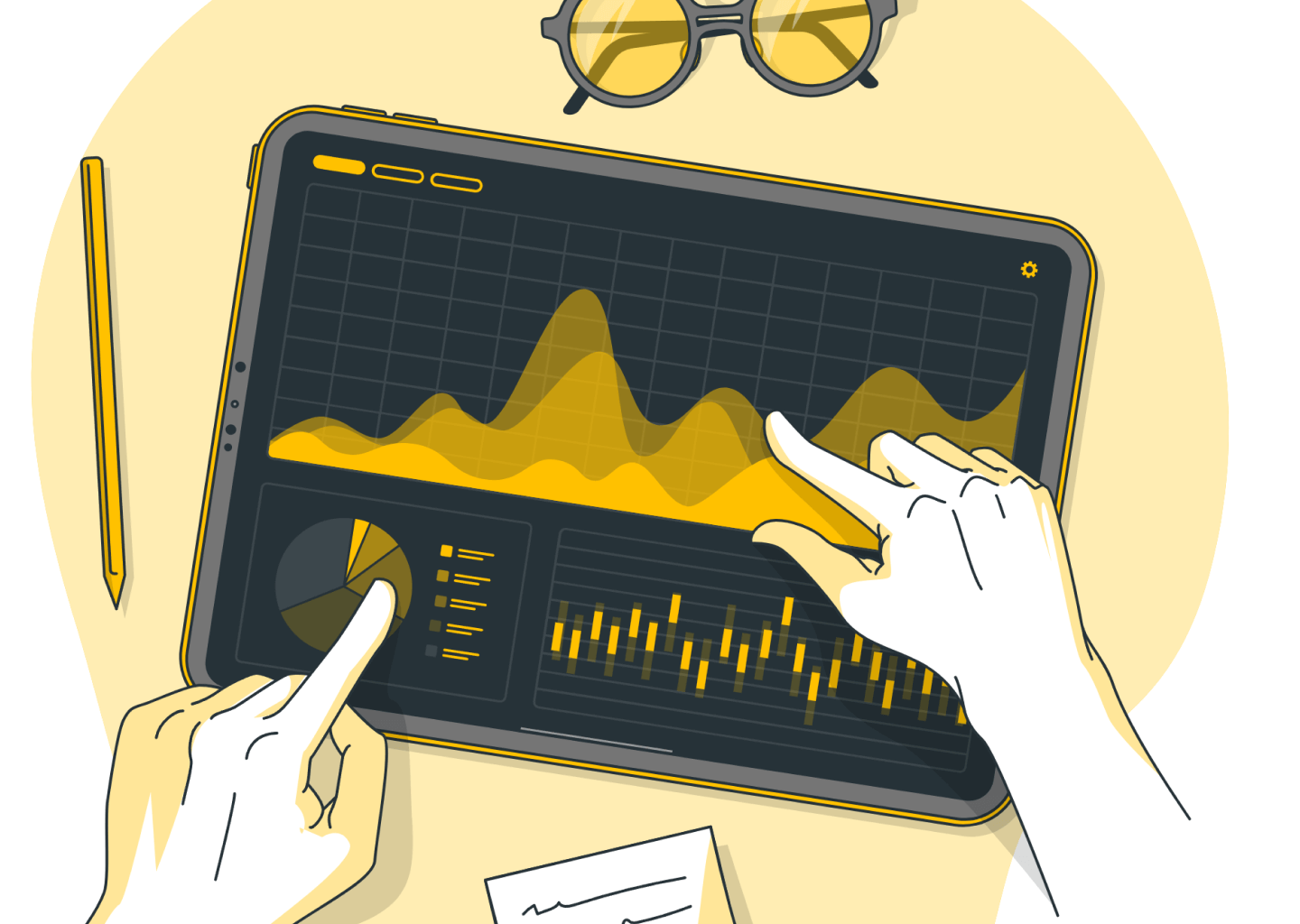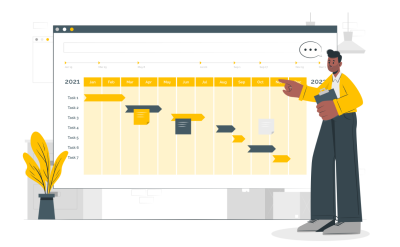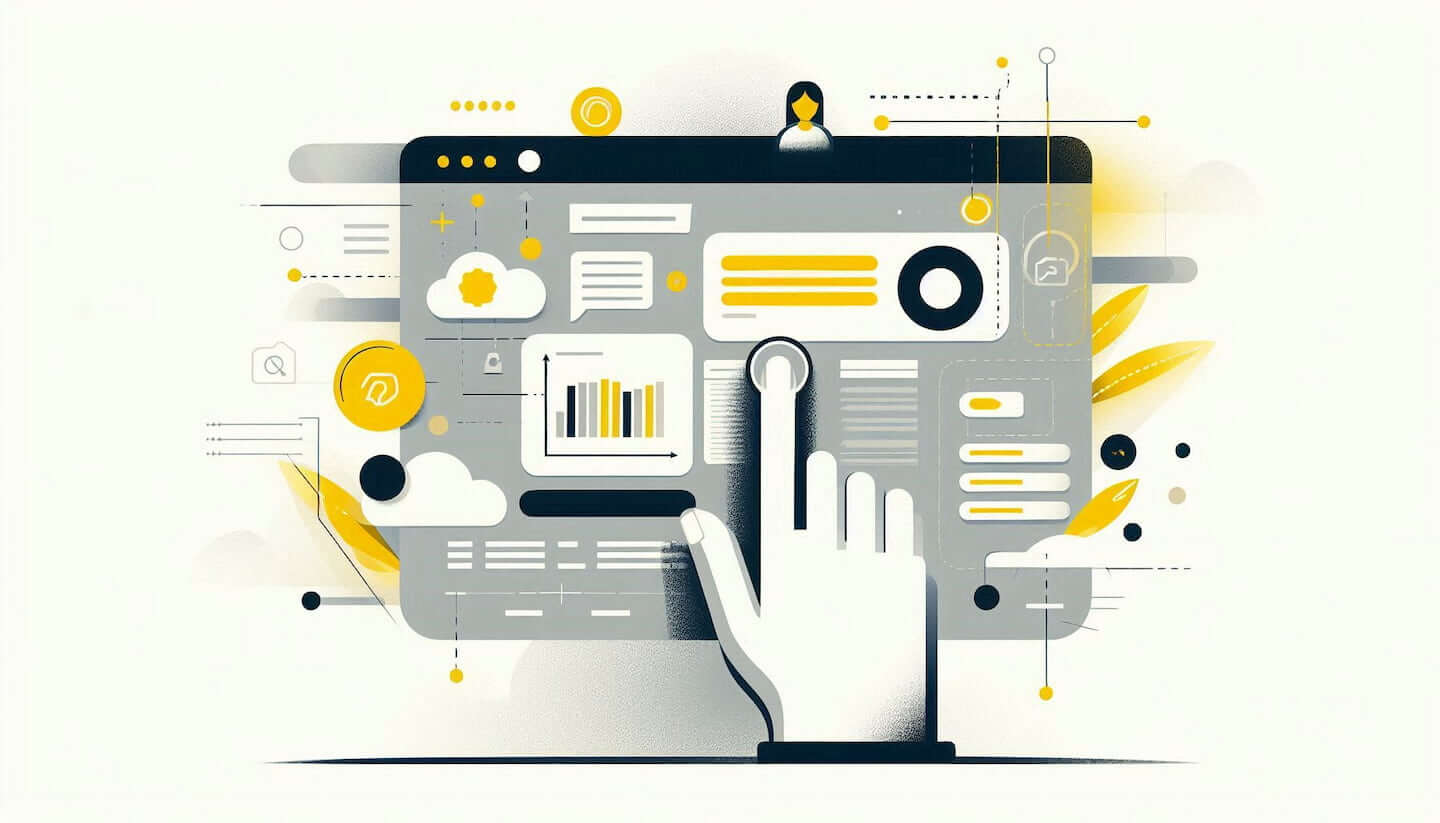Cold emailing, while initially challenging, can be a remarkably effective tool for building connections and advancing your goals. However, when you find that sweet spot between professionalism and warmth, the results can be truly transformative. In the following sections, we'll delve into the best cold email templates and cold email examples, empowering you to craft emails that resonate and inspire action.
What is Cold Emailing
Cold emails are letters sent to people the company had no contact with before. No one is waiting for them, no one asked to receive them, and there is not a big chance they will open and read them. Nowadays, many tools and email formulas help learn the recipes of a cold email that works. As a result, it became easier and faster for company agents to launch effective campaigns. So, let's take a look at the best cold email templates, must-have tools, tips, and more.
Crafting the Best Cold Email Template for Maximum Responses
Sending cold emails isn't just about hitting "send" and hoping for the best. It's an art form that requires careful crafting to maximize your chances of getting a response. Here's how to do it right:
Investigate Your Recipient's Pain Points
Before you even think about drafting your email, take the time to research your recipient. Dive into their industry, their company, and their role to understand what challenges they're facing. Are there common pain points in their industry? What are the specific issues their company might be dealing with? Understanding their needs and concerns will help you tailor your message to resonate with them. You can use tools like LinkedIn, company websites, or industry reports to gather this information.
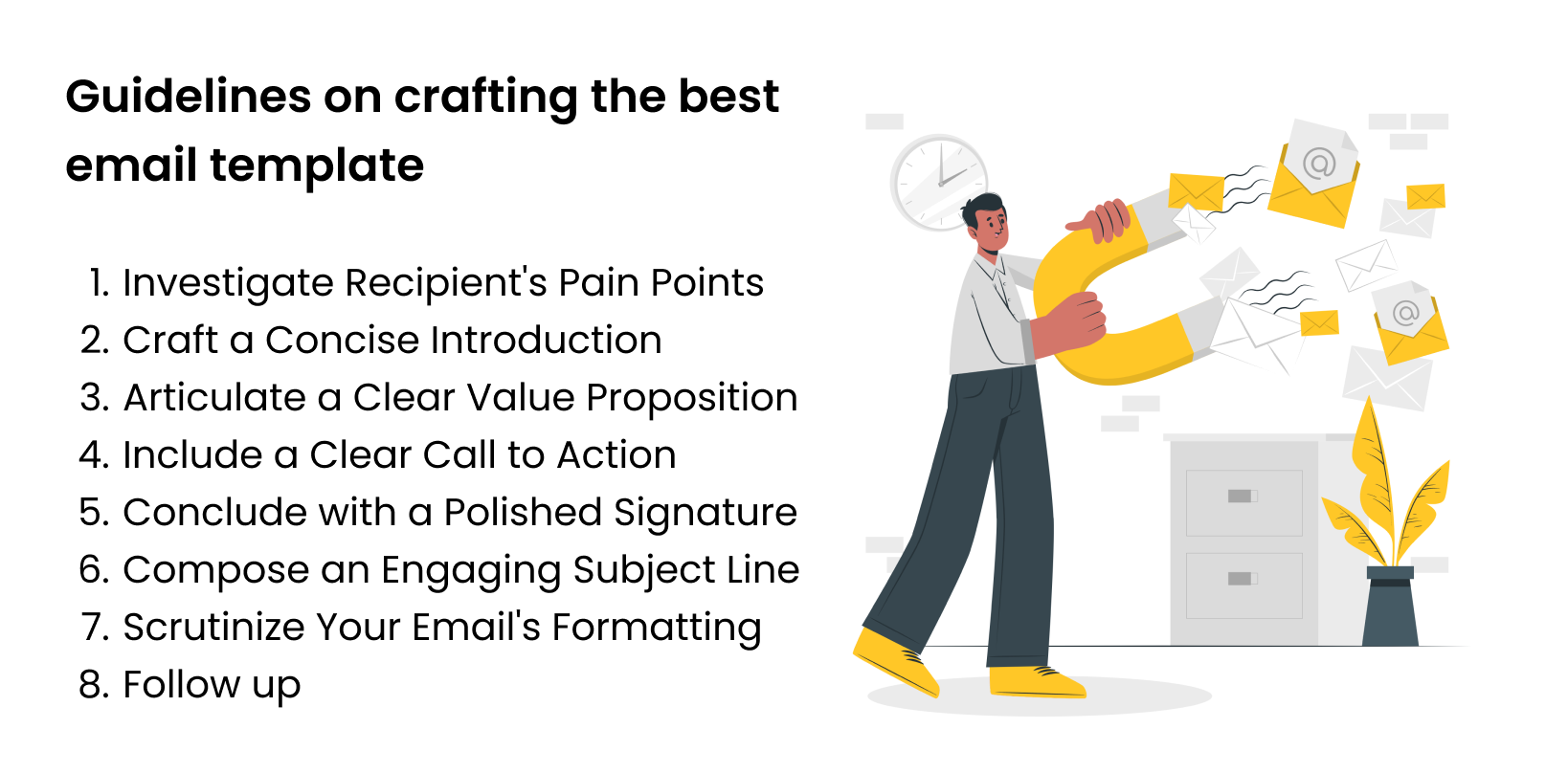
Craft a Concise Introduction
Your email introduction is your chance to make an excellent first impression. Keep it short and to the point, introducing yourself and explaining why you're reaching out. Avoid long-winded introductions; instead, get straight to the point. Mention any mutual connections or common interests you may have to establish rapport.
For example: "Hi [Recipient's Name], I came across your profile on LinkedIn and was impressed by your work in [specific area]."
Articulate a Clear Value Proposition
Why should your recipient care about what you have to say? Clearly articulate the value you can offer them and how you can help solve their problems. Highlight the benefits of your product or service and how it addresses their pain points. Personalize this part as much as possible based on your research.
For example: "I noticed your company is struggling with [specific challenge], and I believe our [product/service] can help streamline your process and save you time and money."
Include a Clear Call to Action (CTA)
When including a clear Call to Action (CTA) in your cold email, ensure it's concise and straightforward. Use action-oriented language that makes it easy for the recipient to respond.
For example: Instead of a vague request, ask something specific like, "Would you be available for a quick 15-minute call next week to discuss how we can help you [achieve a specific goal]?"
Conclude with a Polished Email Signature
Remember to include a professional email signature at the end of your message. This adds a personal touch and makes it easy for the recipient to get in touch with you. Include your full name, job title, company name, and contact information. You can also add a link to your LinkedIn profile or company website for further credibility.
Compose an Engaging Subject Line
Your subject line is the first thing your recipient will see, so make it count. Keep it short, catchy, and relevant to grab their attention. Use their name if possible, and consider asking a question or offering a benefit.
For example: "Quick Question about [Their Interest/Challenge]?" or "Unlocking [Specific Benefit] for [Their Company]."
Scrutinize Your Email's Formatting
Finally, make sure your email is easy to read and visually appealing. Use short paragraphs, bullet points, and white space to break up the text and make it more digestible. Avoid using large blocks of text that can overwhelm the reader. Use a professional font and format, and ensure your email is mobile-friendly. Test your email on different devices to ensure it looks good everywhere. Remember, the easier your email is to read, the more likely it is to get a response.
Follow up
When following up on a cold email, it's important to be persistent yet respectful. If you don’t receive a response within 3–5 days, send a polite follow-up to gently remind them of your initial message. Add value by sharing a relevant resource, insight, or a brief update that aligns with their challenges or interests. Keep the tone friendly and professional, avoiding any hint of impatience.
For instance, you might say: “Just wanted to follow up on my previous email and share [resource/insight]. I’d love to explore how we can help you [specific goal]. Let me know if this is of interest or if there’s a better time to connect!” By staying helpful and considerate, you improve the chances of engagement without overwhelming the recipient.
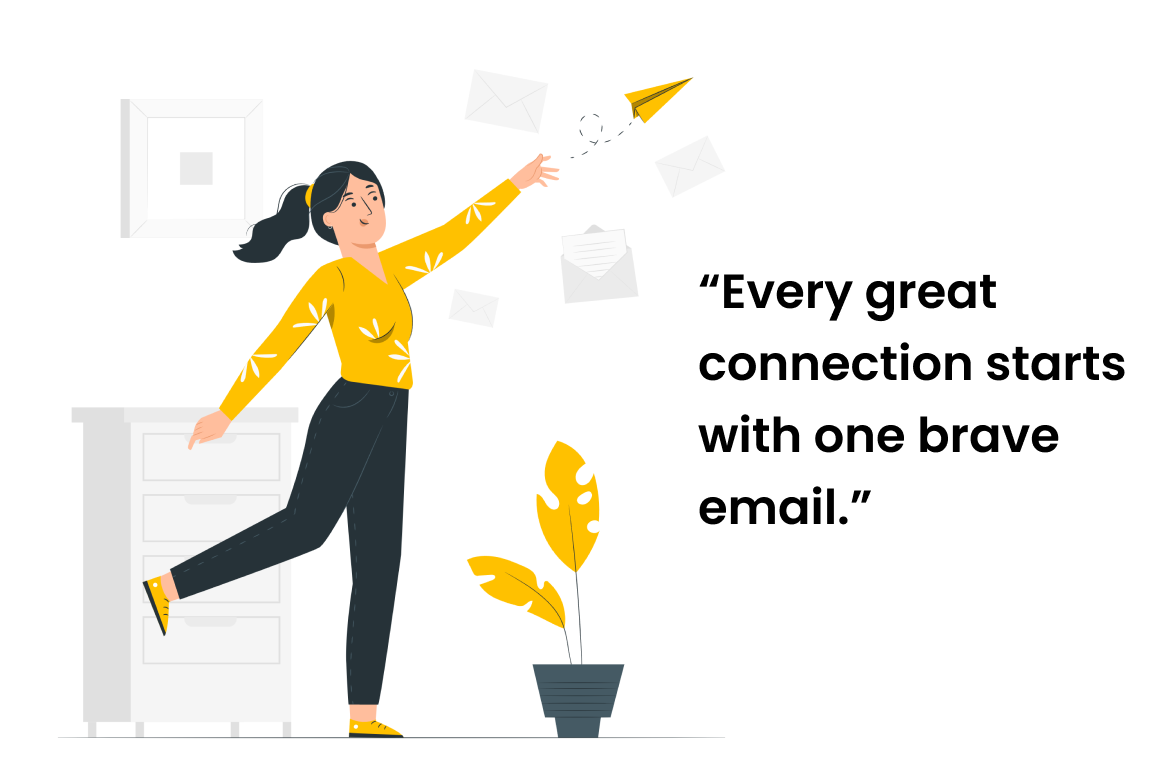
Cold Email Examples and Formulas That Actually Work
Many time-tested and simple formulas could be used in your email marketing to get audiences to take action, so it is not necessary to start from zero. Check out each cold email template listed below and adapt it to your business. If one does not work well enough, try another one and keep trying—there is no one perfect and universal solution.
The "Present - Future - Way" Cold Email Template
Start with the existing potential customer's situation or problem - describe it concisely to your addressee - it is their present. After that, tell them about the possible improved future where all the troubles are solved. Finally, delineate how this fantastic future can be achieved with the help of your company/solution, etc.
This email body is based on the behavioral approach in psychology that considers pain and pleasure the biggest motivators for people. By using both, you will get closer to your goal.
Subject: Solving [Their Pain Point] for [Their Company]
Hi [Recipient's Name],
I noticed that [mention their pain point]. It's a common challenge for [their industry/role]. But what if I told you there's a better way?
Imagine a future where [paint a picture of success with your solution]. That's where [Your Company] comes in. We specialize in [brief description of your solution] and have helped companies like [mention a relevant success story].
Let's chat about how we can help you achieve [their desired outcome]. Are you free for a quick call this week?
Best,
[Your Name]
[Your Company]
[Your Contact Information]
The "Attention - Interest - Desire - Action (AIDA)" Cold Email Example
It is one of the marketers' favorite formulas. Many people know this rule of the sales process; however, not everyone knows that it can be successfully used with cold, formal emails.
AIDA model is the method of constructing advertising and sales processes targeted at all touchpoints during a client's purchase journey, from introducing the product to buying it. There are four fundamental stages of this trip:
- Awareness/Attention - The first impression is important. The response rate and the conversion rate of users into clients depend on how they find your business. Either way, the more people would know about your product or service - the higher the number of interested customers you will reach.
- Interest - It is the most crucial stage. If the user decides that a product does not make sense to him or is not good enough, he will not buy it.
- Desire - At this stage, being interested, customers realize they need it, or you should build a desire for the product or service you're offering.
- Action - The final push can include any of these popular schemas: free trials, referral systems, one-on-one offers, discounts, or others.
So, catch the person's attention (for example, include the facts about your addressee), ignite their interest by providing a good reason, spark the desire (for instance, by listing your other clients or an exclusive offer that expires soon), and finally, state what the person should do to obtain the desired value.
Subject: Quick Question about [Their Interest/Challenge]?
Hi [Recipient's Name],
Are you interested in [solving their problem]? Our [product/service] could do it for you!
We have already done it for [number of clients, or a famous one], and they achieved an increase in sales of around [x%]!
Also, [your service/product] helped these companies to improve [additional benefits].
I'd love to share how we can do the same for you. Would you be open to a quick chat this week? Let me know a time that works for you.
Thanks,
[Your Name]
[Your Company]
[Your Contact Information]
The "Picture - Proofs - Action" Cold Email Template
This method has to catch the reader's attention from the first sentence and make him want more. Next, describe the desired reality for your customer or use a promising opening. Next, support your idea with a chain of facts, studies, etc. Finally, indicate the next step your addressee should take to get what he needs—to contact your company or to try a product/service.
The strength of this cold email formula lies in the series of facts and proofs, which make your promise much more credible.
Subject: See How [Your Solution] Can Transform [Recipient's Outcome]
Hi [Recipient's Name],
Have you ever considered how [Your Solution] could transform [specific aspect of their business]?
[Paint a picture of success with your solution].
But don't just take our word for it - see what our satisfied clients have to say: [Include a testimonial or case study].
Ready to see how [Your Solution] can work for you? Let's schedule a call.
Best,
[Your Name]
[Your Company]
[Your Contact Information]
The "Let Them Opt-Out" Cold Email Example
Numerous studies prove that people are more likely to accept an offer if they feel no pressure and have the freedom of choice. So, showing your addressee the way out increases the chances of getting in.
Subject: Quick Question about [Their Interest/Challenge]?
Hi [Recipient's Name],
I hope this email finds you well. If you're not interested in hearing more about [Your Offer], just let me know, and I won't bother you again.
Otherwise, I'd love to share how we can [solve their problem/improve their situation]. Would you be open to a quick chat this week?
Thanks for your time,
[Your Name]
[Your Company]
[Your Contact Information]
The "QVC" Cold Email Template
One more excellent email formula that helps to increase the response rate is called QVC:
- Q - question. No more than one sentence.
- V - value proposition. This part should include one to three sentences maximum.
- C - closing. It should be one sentence with a call to action.
Subject: [Question] - [Your Value Proposition]
Hi [Recipient's Name],
Have you ever faced [their pain point]? We've developed a solution that can help.
[Your Value Proposition].
Ready to learn more? Let's schedule a call at your convenience.
Best regards,
[Your Name]
[Your Company]
[Your Contact Information]
The "Awareness-Comprehension-Conviction-Action (ACCA)" Cold Email Template
Let's figure out what does mean each word in this formula:
- Awareness - Tell about the problem or situation.
- Comprehension - Explain how it could influence them.
- Conviction - Build a desire by demonstrating how your product/service fixes the problem.
- Action - Suggest responding or taking a step towards trying a free demo, for example.
Many people may think this method is similar to AIDA, but the "Comprehension" and "Conviction" aspects confirm the importance of clarity and suggest certainty simultaneously.
Subject: Solving [Recipient's Pain Point] - Let's Work Together!
Hi [Recipient's Name],
Are you aware of how [their pain point] affects [their business/goals]?
Let me help you comprehend how [Your Solution] can address this.
Once you see the benefits, I'm convinced you'll want to take action. Let's discuss this further in a quick call. When are you available?
Best,
[Your Name]
[Your Company]
[Your Contact Information]
The "Manager FWD" Cold Email Template
This approach involves crafting an email that appears to be forwarded from a mutual connection or higher-up in the recipient's organization. This can increase the email's credibility and likelihood of being opened. Just be sure to use this tactic ethically and transparently.
Subject: Quick Question from [Mutual Connection]
Hi [Recipient's Name],
[Common Connection's Name] suggested I reach out to you. They spoke highly of your work in [mention a relevant area].
I wanted to introduce myself and see if [Your Offer] might be of interest to you. Can we chat further this week?
Thanks,
[Your Name]
[Your Company]
[Your Contact Information]
The "Personalization-Value Proposition-Clear Call to Action:Cold Email Template
This template is inspired by successful cold email strategies that emphasize personalization and clear value propositions.
Subject: Quick question about [Prospect's Company]
Hi [First Name],
I noticed that [Prospect's Company] has been [specific observation about their business or recent achievement]. At [Your Company], we've helped organizations in [Prospect's Industry] achieve [specific result or benefit], and I believe we could assist you in reaching similar outcomes.
Could you point me toward the appropriate person to discuss this further? If it's you, are you available for a brief call next week?
Best regards,
[Your Name]
[Your Position]
[Your Company]
Key Elements:
Personalization: Mentioning a specific detail about the prospect's company demonstrates that you've done your research and aren't sending a generic email.
Value Proposition: Highlighting a specific result or benefit that your company has achieved for similar clients provides a compelling reason for the prospect to engage with you.
Clear Call to Action: Asking to be directed to the appropriate person or suggesting a brief call next week makes it easy for the recipient to respond.
Tips to Get Your Cold Email Read
When recipients don't open your email, it doesn't indicate they aren't interested. They could be busy that day and skipped the email, or maybe the email subject wasn't clear. We suggest some valuable tools that could help a lot with cold emails if you are a Zendesk user.
The first one is the Proactive Campaigns app. As we said before, the more users see your emails—the bigger the number of requests you will get. And this app is exactly what you need for that purpose! So, add Proactive Campaigns to your Zendesk and enjoy.
This app lets you segment customers into target lists, send mass follow-ups with the possibility of personalizing them, and track customers' responses automatically! You can also schedule campaigns and run them offline, save templates, check the statistics, and select the email address to send your letter from.
The second app we recommend is Email Tracking for Zendesk. It gives you essential information about whether the receivers opened an email when they did it and what types of replies engage customers. Don't hesitate—that would save time and effort and help increase reply rates.
Make Them Personal
Remember that the person you're addressing is receiving many sales emails daily, and as a result, you should avoid template-like features that will surely lead your masterpiece into a "Deleted" folder, such as impersonalized greetings (Dear Sir… or To whom it may concern). Instead, find out who exactly you're writing to and address them by their first name. Additionally, it works well to research the person (like hobbies or interests) and show this in the letter opening or underline common things between you. Although it takes time, the results won't take long to show up.
Focus on the Customer
Instead of focusing on your own or your company's advantages and achievements, focus on your potential client's (or their company's) needs or issues and show how your company can help. This will let your addressee feel you care about them and can be a solid spur to respond.
Be Laconic
Keep in mind that your email isn't expected or looked forward to, and, in fact, it is fortunate if it gets opened at all. Therefore, the reader should not be scared away by a voluminous message in fine print when it does. Instead, think about the most important things you would like to say and ensure they are placed close to the beginning. Moreover, keep your message short while making it easy to read using brief paragraphs, bullets, and other formatting tools.
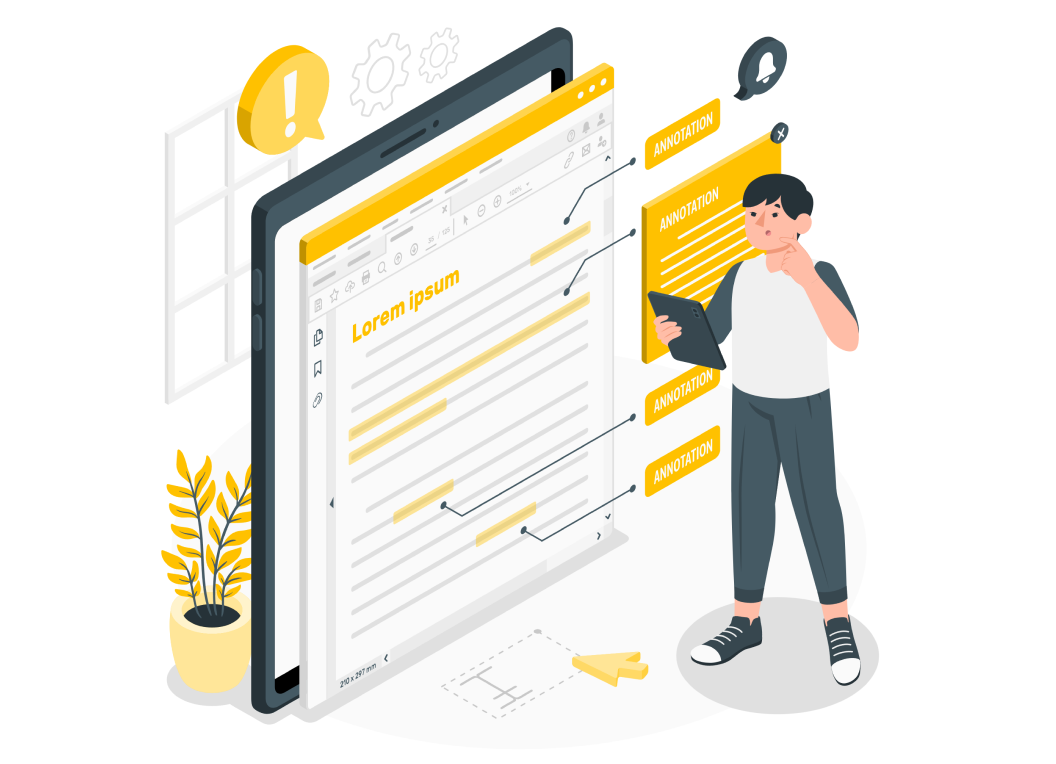
Imply What You Want Them to Do
No, it shouldn't sound like a call to action in an ad, but still, at the letter closing, ask your addressee to perform the action you expect—to respond, give you a call, schedule a chat, visit your website, etc. Asking them a question at the end of the letter is also considered an excellent technique, which sometimes compels the person to respond. Don't forget about all the recommendations listed above for maximum impact.
Elements Every Cold Email Should Include
In terms of cold emailing, success hinges not just on the content of your message but also on its structure and presentation. To craft an email that grabs attention and prompts action, it's essential to include the following key elements:
- Personalized Greeting: Addressing the recipient by name fosters an immediate connection and relevance.
- Introduction: A concise introduction serves as your virtual handshake, offering a glimpse into who you are and why you're reaching out.
- Value Proposition: Clearly outlining the value you bring to the table is crucial for capturing the recipient's interest and demonstrating relevance to their needs.
- Social Proof: Incorporating testimonials, case studies, or examples of past successes bolsters your credibility and instills confidence in your offering.
- Call to Action (CTA): Providing a clear and compelling next step encourages the recipient to take action, whether scheduling a call, visiting your website, or replying to the email.
- Professional Signature: Concluding with a polished signature, complete with your full name, job title, company details, and contact information, lends a professional touch and facilitates further communication.
By thoughtfully integrating these elements into your cold emails, you can enhance their impact, increase engagement, and ultimately achieve your desired outcomes.
Subject Lines for Cold Emails to Boost Open Rates
The subject line is your cold email's first impression and can make or break its success. Here are some compelling subject line ideas to increase open rates:
- Curiosity: Spark the recipient's curiosity by teasing a benefit or intriguing question. For example, "Discover the secret to [desired outcome]..."
- Urgency: Create a sense of urgency to encourage immediate action. For example, "Limited Time Offer: Don't Miss Out!"
- Relevance: Make your subject line relevant to the recipient's needs or interests. For example, "Solving [Specific Problem] for [Recipient's Company]."
- Benefit-Oriented: Highlight a clear benefit the recipient will gain from opening the email. For example, "Increase Your Sales with Our Proven Strategy."
- Question: Pose a question that piques the recipient's interest and encourages them to open the email. For example, "Struggling with [Specific Challenge]? We Can Help."
Remember to keep your subject lines short and relevant to increase their effectiveness. Experiment with different approaches to see what works best for your audience.
The Advantages of Using Cold Email Templates
Cold email templates aren't just handy tools. They're secret weapons in the arsenal of modern marketers and sales professionals. These templates offer many advantages that can transform your outreach efforts from mundane to magnificent.
First of all, crafting cold emails from scratch can be time-consuming and daunting. Besides, it's easy to get caught up in the details and lose sight of your message's effectiveness. This is where templates come in handy. They provide a structured framework that guides your communication, ensuring you convey your message clearly and consistently.
But templates do more than save time. They also help you maintain consistency across your emails. Consistency is key to building brand identity and trust with your audience. When recipients see consistent messaging from you, they're more likely to recognize and remember your brand.
Moreover, templates allow you to scale your outreach efforts without sacrificing quality. Also, with a library of pre-designed templates at your disposal, you can quickly create and send out multiple emails to many prospects.
One of the most significant benefits of using templates is their effectiveness. In addition, templates are often based on proven strategies and best practices, ensuring your emails are compelling and engaging.
However, the most underrated advantage of using templates is their flexibility. While templates provide a framework, they also allow for customization. You can tailor your message to each recipient, making it more relevant and personalized. This customization increases the chances of your email resonating with the recipient and driving the desired action.
In summary, cold email templates are a valuable asset for any outreach campaign. They save time, maintain consistency, scale your efforts, and increase effectiveness. By leveraging templates, you can streamline your outreach process, engage your audience, and achieve your business goals more efficiently.
FAQs
What is the difference between warm and cold emails?
Warm emails are sent to individuals with whom you have an existing relationship or who have expressed interest in hearing from you. They are typically more personalized and have a higher chance of eliciting a response. Cold emails, on the other hand, are sent to recipients with whom you have no prior relationship. They are unsolicited and often require more effort to make a meaningful connection.
Do cold emails work?
Yes, cold emails can be effective when done correctly. While they may not always yield immediate results, well-crafted cold emails can generate leads, initiate conversations, and ultimately drive business growth. The key is to personalize your message, provide value to the recipient, and follow up persistently.
Is it illegal to cold email someone?
Cold emailing is not illegal as long as it complies with anti-spam laws and regulations. In many countries, including the United States and the European Union, cold emails must include a clear opt-out option, identify the sender accurately, and not use misleading or deceptive subject lines. It's crucial to familiarize yourself with the laws in your jurisdiction and follow best practices to avoid legal issues and maintain a positive reputation.
How do I get replies to cold emails?
Getting replies to cold emails requires a strategic approach. Start by personalizing your emails to make them relevant to the recipient. Research your prospects and tailor your message to their needs or interests. Offer value by providing helpful information, insights, or solutions to their pain points. Keep your emails concise and easy to read, with a clear call to action that prompts the recipient to respond. Follow up politely if you don't get a reply, and be persistent without being pushy.
Who sends cold emails?
Cold emailing is more aligned with sales and marketing, focusing on prospecting and customer acquisition. Customer support prioritizes existing relationships and solving problems rather than initiating new ones.

